Most of the world’s largest birds are flightless, majestic creatures of the ground, think ostriches and emus. They navigate landscapes on powerful legs and use their long necks to reach for food. Yet, nature also boasts feathered giants that defy gravity, taking to the skies with incredible wingspans and flight prowess.
Some of these avian titans are such masters of the air that they inspire advancements in air travel technology, their flight efficiency a marvel of evolution. Others, carrying heavier frames, reserve flight for essential needs – foraging across greater distances or escaping danger.
Let’s delve into the realm of the largest flying birds in the world, comparing their impressive wingspans and fascinating characteristics.
The Biggest Flying Birds Ranked by Wingspan
Wandering Albatross: The Reigning Champion (Up to 11.5 feet)
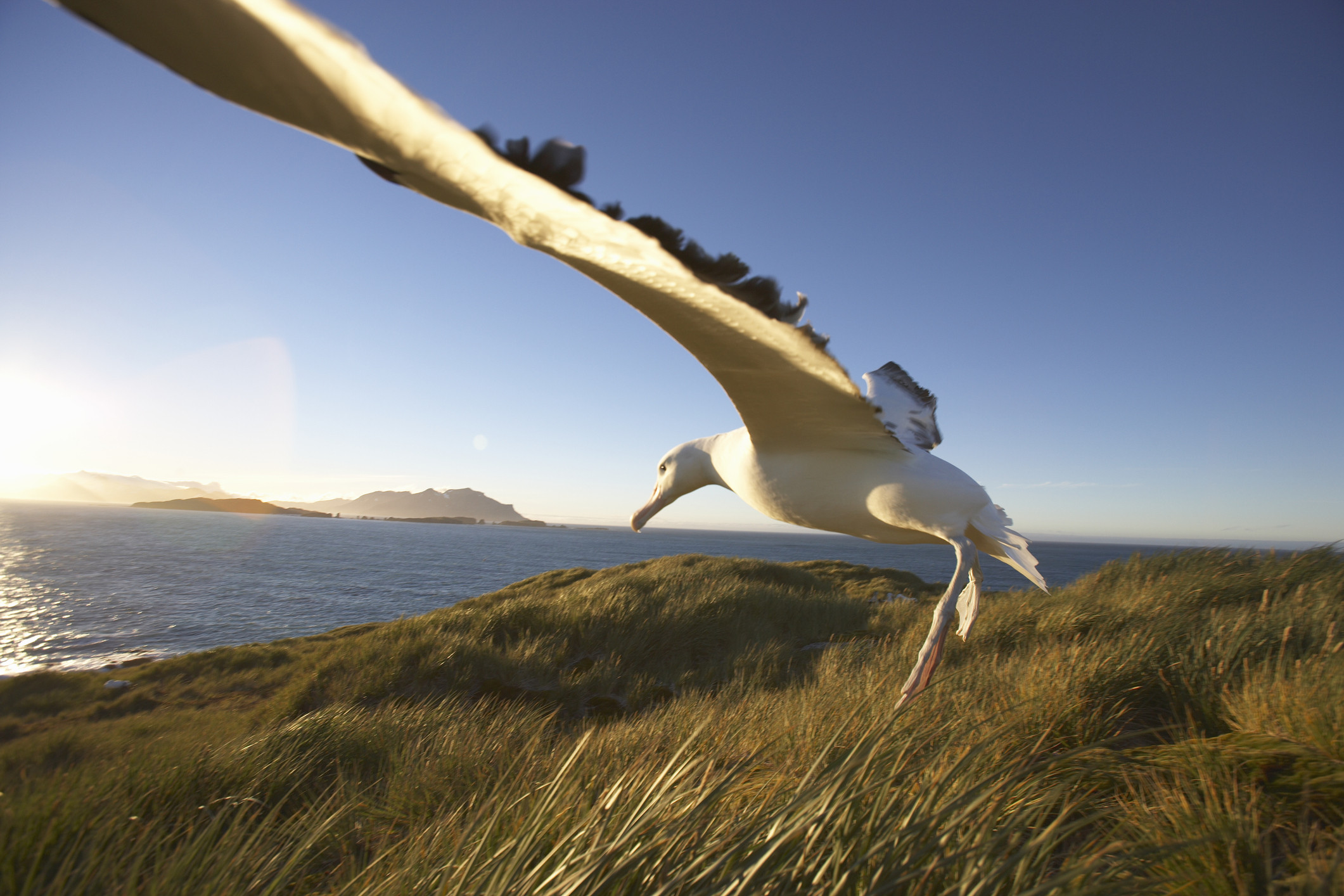 Wandering albatross landing at a nesting site, showcasing its impressive wingspan.
Wandering albatross landing at a nesting site, showcasing its impressive wingspan.
The wandering albatross (Diomedea exulans) proudly holds the title for the largest wingspan of any living bird. This magnificent seabird can achieve a wingspan stretching up to a staggering 11.5 feet (3.5 meters). This immense wingspan is not just for show; it’s the key to their extraordinary flying abilities, enabling them to undertake epic migrations of up to 75,000 miles (120,000km) in a single year.
These birds are exceptional gliders, so efficient that taking off and landing requires more energy than their actual flight. They can effortlessly cover hundreds of miles, barely needing to flap their wings. When bursts of speed are necessary, they can reach impressive velocities of around 87 mph (140kph).
Their flight technique, known as dynamic soaring, is a wonder of natural engineering. Wandering albatrosses utilize their long, slender wings to harness rising air currents above the ocean waves, gaining lift with minimal exertion.
Wandering albatrosses are rarely seen on land, except when they congregate in large breeding colonies on remote islands near the Antarctic Circle and some South Atlantic islands. Outside of breeding season, they roam the vast oceans, primarily feeding on fish and cephalopods like squid, octopus, and cuttlefish.
The albatross family also includes other giants, such as the southern royal albatross (Diomedea epomophora), boasting a wingspan of up to 11.8 feet (3.6m). These birds breed on islands near New Zealand and the southern tip of South America, further demonstrating the impressive size within this avian group.
Dalmatian Pelican: A Gentle Giant of the Waters (Up to 10.5 feet)
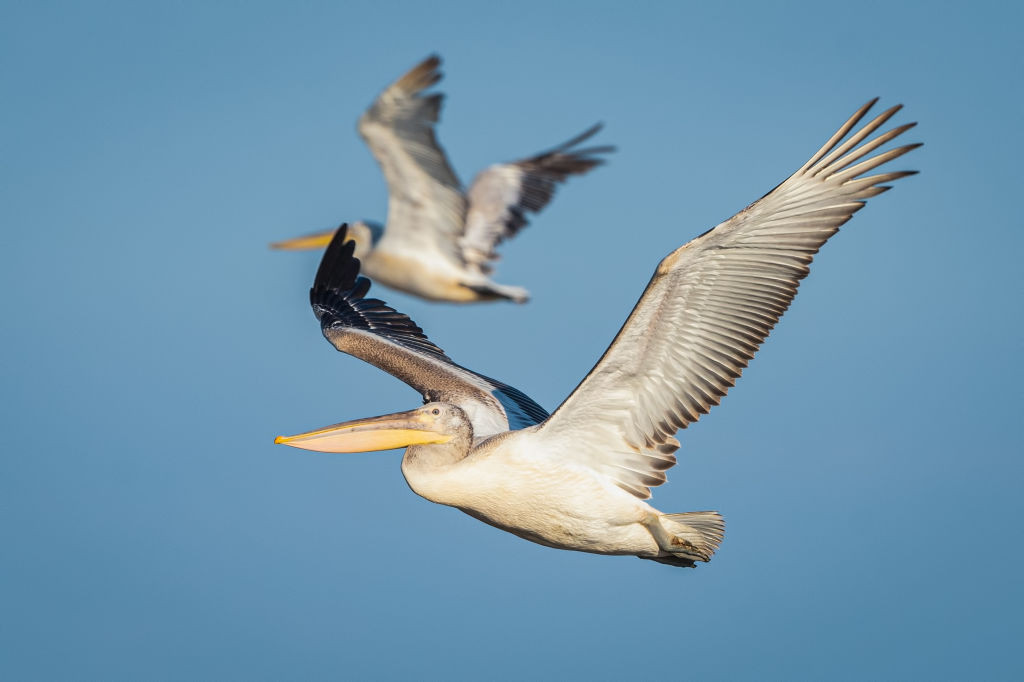 Dalmatian pelicans in flight formation, highlighting their large size and synchronized movements.
Dalmatian pelicans in flight formation, highlighting their large size and synchronized movements.
Pelicans, as a family, are among the largest flying birds, and the Dalmatian pelican (Pelecanus crispus) stands out as the largest pelican species, according to Guinness World Records. These birds can reach a body length of up to 5.9 feet (1.8m) and possess a wingspan that can extend to 10.5 feet (3.2m).
Despite its name suggesting Dalmatia in Croatia, where it was once found, the Dalmatian pelican has been extinct there since the 1950s. Fossil evidence even indicates they bred in Britain until medieval times, showcasing a wider historical distribution.
Today, Dalmatian pelicans inhabit regions of southern Europe and Turkey, extending across the upper Middle East into Russia, and even into China. They are impressive eaters, consuming around 2.6 pounds (1,200g) of fish daily, and occasionally supplementing their diet with amphibians and small reptiles.
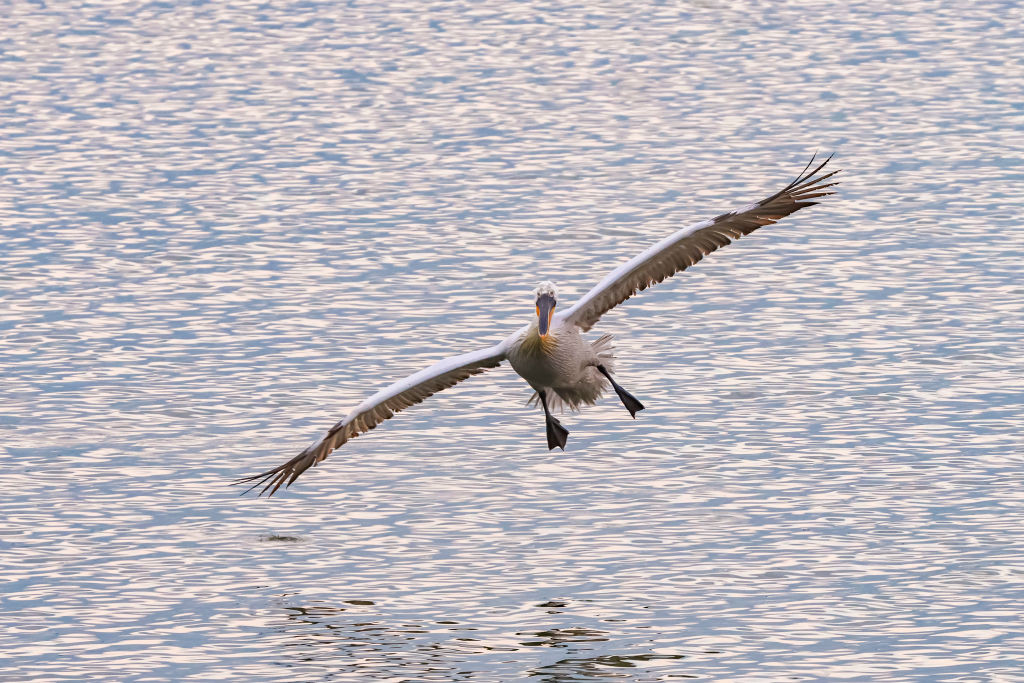 A great white pelican landing on water, showing its size in comparison to the water surface.
A great white pelican landing on water, showing its size in comparison to the water surface.
The great white pelican, while slightly smaller, is another substantial species, with a wingspan reaching up to 10.5 feet (3.2m), closely rivaling the Dalmatian pelican in size within the pelican family.
Marabou Stork: The Scavenging Giant (Up to 9.8 feet, potentially larger)
 A detailed close-up of a marabou stork's head and neck, emphasizing its distinctive features.
A detailed close-up of a marabou stork's head and neck, emphasizing its distinctive features.
The marabou stork (Leptoptilos crumeniferus) is a colossal stork found throughout sub-Saharan Africa. This imposing bird is a highly effective scavenger, often seen alongside vultures at carrion feasts. They are known to follow large animal herds, preying on insects and small mammals disturbed by the herd’s movements. Remarkably, marabou storks have even been observed marching ahead of wildfires to snatch fleeing animals.
While their average wingspan is around 8.5 feet (2.6m), historical records from naturalists Fisher and Peterson suggest individuals reaching an astonishing 12 feet (3.7m) wingspan.
Marabou storks typically prefer to fly low to the ground while hunting, rather than soaring at great heights. They can be identified by their distinctive grey and white wings and long, bare throat sacs, setting them apart from other stork species.
Andean Condor: King of the Andes (Up to 10.5 feet)
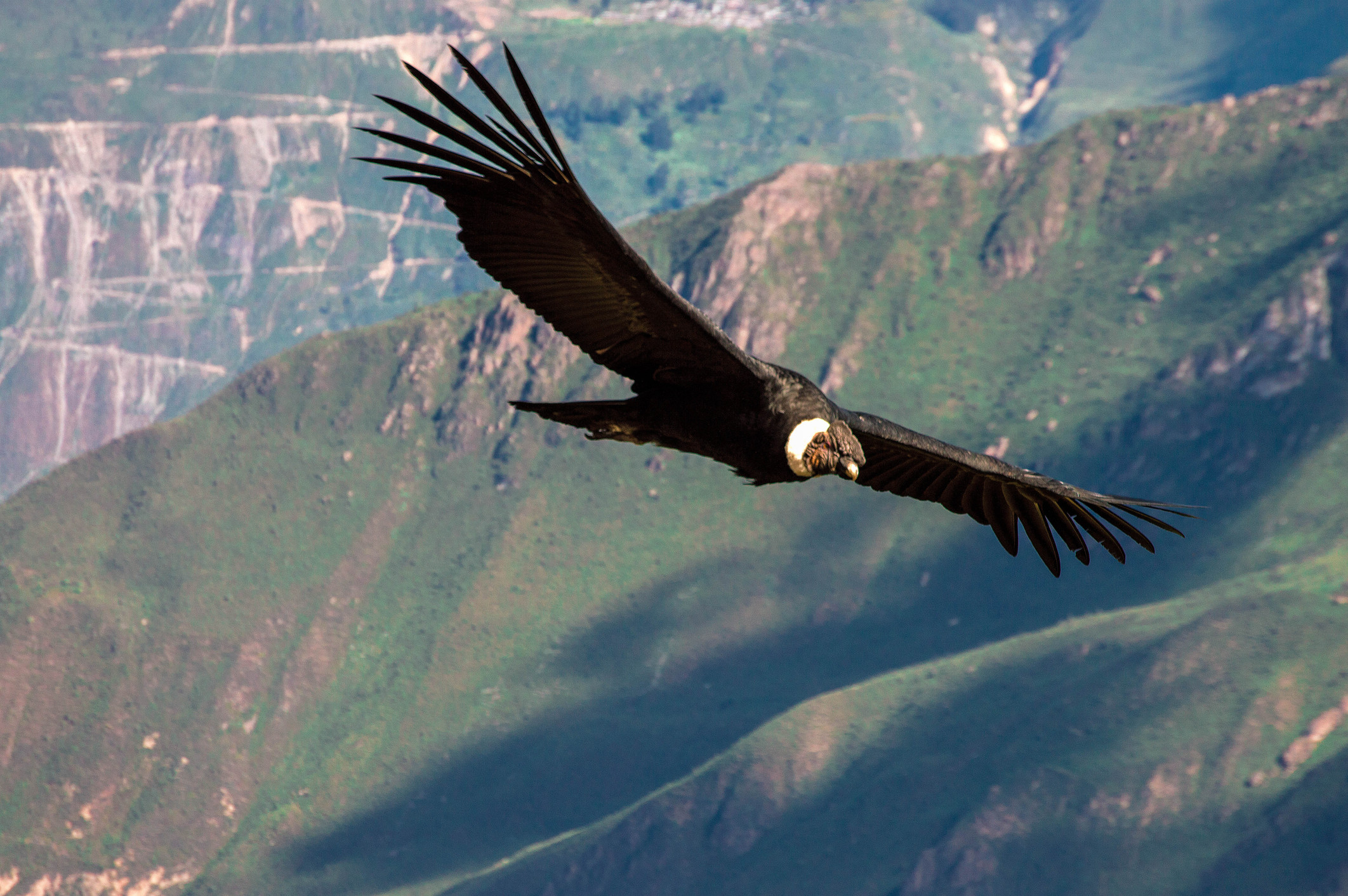 An Andean condor soaring gracefully over Colca Canyon, Peru, displaying its impressive wingspan in flight.
An Andean condor soaring gracefully over Colca Canyon, Peru, displaying its impressive wingspan in flight.
When considering birds of prey, the Andean condor (Vultur gryphus), native to South America, reigns supreme in size. These massive birds can weigh up to 33 pounds (15kg).
As the largest vulture species, the Andean condor boasts a wingspan exceeding 9.8 feet (3 meters). Weighing up to 33 pounds, they expertly utilize air currents and thermals to sustain their heavy bodies in flight, gliding effortlessly through their mountainous habitat.
Andean condors are characterized by their large black bodies, a distinctive white neck ruff, and featherless heads. Interestingly, males and females exhibit no visible differences in size or physical characteristics, a unique trait among birds of this size.
Kori Bustard: The Heavyweight Champion of Flight (Up to 9 feet)
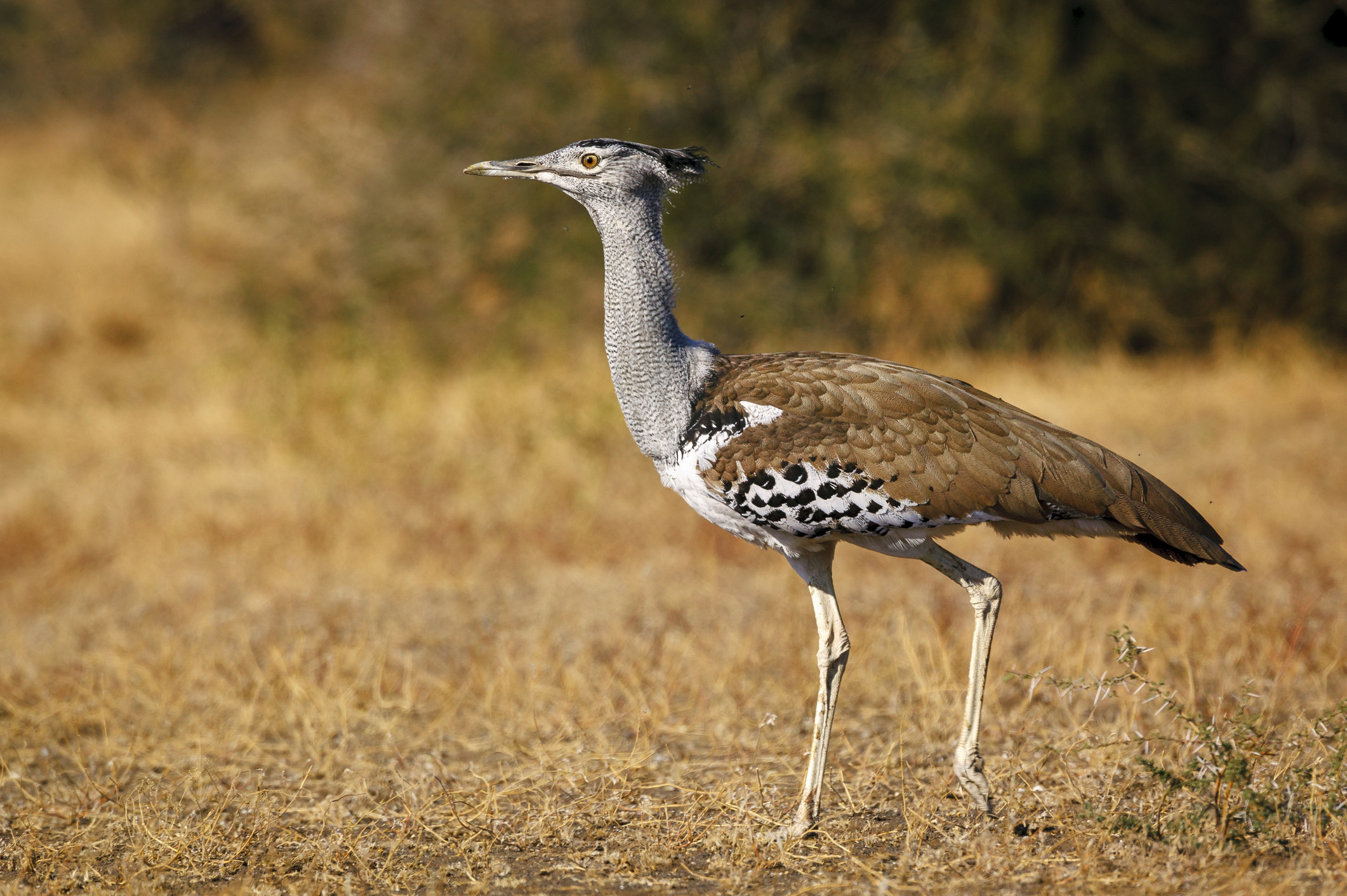 A kori bustard standing in Botswana, showcasing its sturdy build and ground-dwelling nature.
A kori bustard standing in Botswana, showcasing its sturdy build and ground-dwelling nature.
The kori bustard (Ardeotis kori) earns recognition as the heaviest flying bird on Earth, despite a slightly smaller wingspan compared to others on this list, reaching up to 9 feet (2.75m). These birds can weigh a remarkable 42 pounds (19kg), making flight a truly strenuous activity.
Due to their considerable weight, kori bustards expend significant energy to take flight, choosing to do so only when absolutely necessary. They spend the majority of their time foraging on the ground, feeding on a diet of caterpillars, dung beetles, grasses, and seeds.
The Prehistoric Giant: Argentavis magnificens
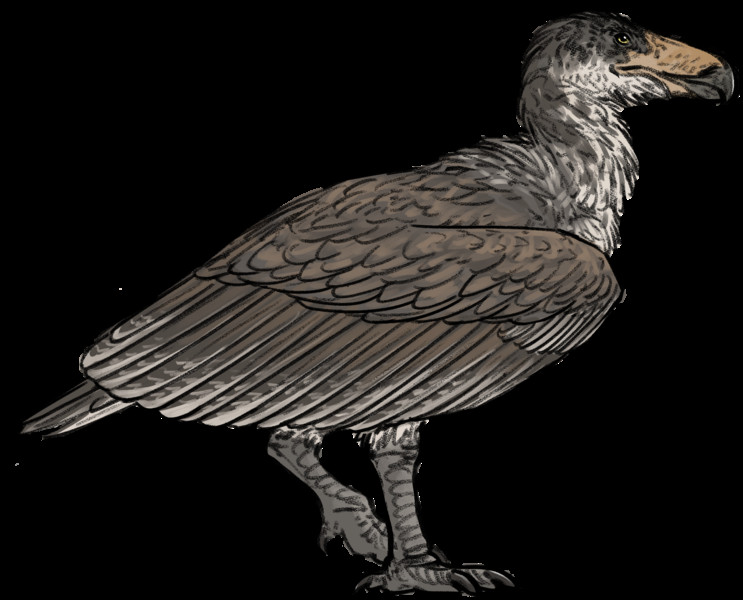 An artistic illustration of Argentavis magnificens, an extinct giant bird, highlighting its massive size compared to a human figure.
An artistic illustration of Argentavis magnificens, an extinct giant bird, highlighting its massive size compared to a human figure.
While the birds mentioned above are the largest flying birds we see today, they are dwarfed by the largest flying bird that ever existed. According to Guinness World Records, the South American teratorn, Argentavis magnificens, claims this title. This extinct species, resembling a vulture, lived 6–8 million years ago and possessed an astonishing wingspan of approximately 25 feet (7.6m). This prehistoric giant truly puts the size of even the largest modern flying birds into perspective, showcasing the incredible scale of avian evolution across time.
